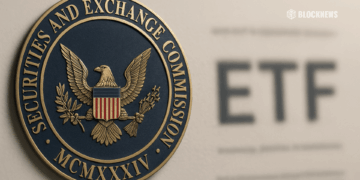A Brief Background into The Stablecoin Issuer
One ubiquitous name in the crypto space is Circle. This entity sees itself as a global financial technology company that helps move money at internet speed through the power of USDC and Euro Coin. According to the company, they are “a financial system that’s always open for business” and are “building the future of money” so that businesses “can build for the future.”
Founded in October 2013 by Jeremy Allaire and Sean Neville and headquartered in Boston, Massachusetts, Circle has been the issuer of the USDC stablecoin and, as of August 2022, had $55 billion in circulation.
Circle announced in 2015 that account holders could fund using “US-issued Visa and MasterCard credit and debit cards” and bank accounts domiciled in the United States. In 2016, European customers were greenlighted to use Circle in EUR and GBP. The expansion of Circle’s services to the United Kingdom came about in April 2016 when Britain’s Financial Conduct Authority granted an electronic money license to Circle, which also helped broaden its relationship with the UK bank, Barclays.
Current Problems and The Circle Solution
Circle CEO Jeremy Allaire has opined that crypto is poised to transform the ways payments are made, and he wants to be at the heart of this future. Much attention has been directed at the USD Coin (USDC) producer based on its digital currency, especially with its partnerships that include MoneyGram and Plaid.
The company, however, has more excellent plans beyond just being a USDC producer. According to Allaire, he predicted that within the next ten years, there would be no reasons for cross-border payments as the concept of it would be as absurd as a cross-border email or a cross-border border browsing session. Those concepts will disappear in an era of everything being connected directly on the internet in an open, accessible way”.
Allaire revealed that Circle has high hopes of playing a focal role in this vision, as it plans to expand USDC use and develop other similar fiat-backed stablecoins for currencies like the Euro. This has helped its valuation, as the company is ready to go public in a $9 billion SPAC merger with Concord Acquisition Corp – double the initial value stated at the first announcement of the deal in July 2021.
Circle, The Elements Acquisition, and The Cross-Chain Transfer Protocol
At the recently concluded Converge22 event in San Francisco, it was announced that the payment orchestration company, Elements, had been acquired, including plans to “quickly scale payment offerings.” Thus, it is easier to integrate existing points of contact with the crypto solutions offered by Circle.
In the announcement, Circle gave details on how the acquisition would contain plans to utilize the payment offerings to “unlock utility value for crypto and lower the barrier of entry for merchants” seeking to get access to next-gen payments and financial services.” The acquisition news came after the USDC market capitalization deflation by $6.7 billion in 83 days.
Nikhil Chandhok, Chief Product Officer at Circle, expressed his approval of the Elements team by saying, “We are very impressed by the Elements team for their work in taking the complexity out of crypto payments.” He continued by commenting on how they had lowered the barriers of entry for payments and financial services and established a dollar payments utility which was core to Circle’s mission.
In a tweet from the official Circle Twitter account, the “all-new Cross-Chain Transfer Protocol to support USDC interoperability for developers and their users” was announced. The tweet mentioned that the Protocol “is permissionless and enables USDC to be sent natively across ecosystems, improving liquidity and reducing fragmentation of bridged assets.”
The Cross-Chain Transfer Protocol has been slated to go live ON THE Ethereum and Avalanche mainnet platforms later in the year, with the partners at Axelar Network, Wormhole, and Socket, amongst others, being the first to integrate Cross-Chain Transfer Protocol within their platforms. Other platforms yet to be named are also slated to integrate with the Transfer Protocol shortly.














